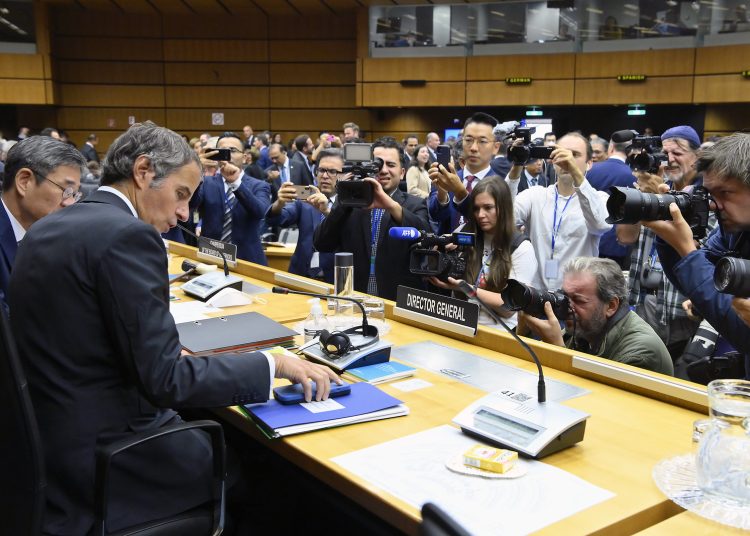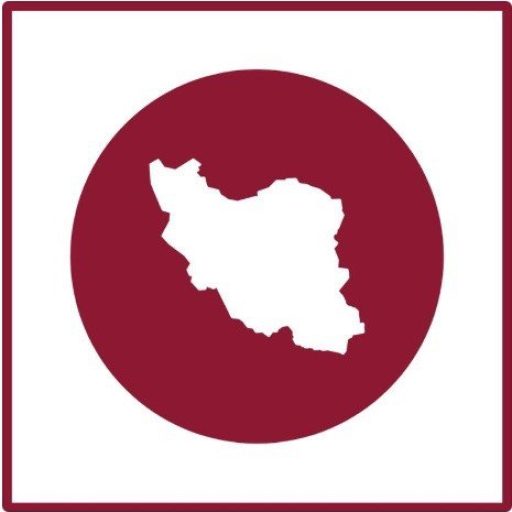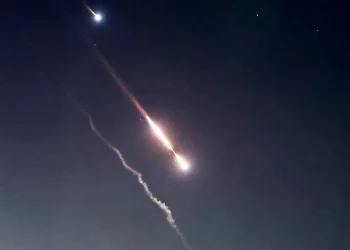In the aftermath of International Atomic Energy Agency (IAEA) Director General Rafael Grossi’s visit to Tehran—an engagement that was anticipated to foster a more favorable environment for dialogue between Iran, the IAEA, and Western states—it appears that European capitals, particularly the three European signatories of the Joint Comprehensive Plan of Action (JCPOA), are persisting in their pursuit of adopting a new resolution against Iran. This development raises concerns about Europe’s intentions and the potential impact on the delicate balance of nuclear negotiations.
During Grossi’s visit, mutual understandings were reached, instilling hope that enhanced cooperation could pave the way for constructive engagement. The IAEA Director General had expressed optimism about galvanizing support from Western parties, including European capitals, to create a conducive atmosphere for dialogue with Tehran. Iran’s Foreign Minister Abbas Araghchi recently reiterated Tehran’s readiness for interaction, while also emphasizing the country’s preparedness to respond to any form of confrontation. Officials, including the head of the Atomic Energy Organization of Iran, Mohammad Eslami, have affirmed that Tehran will promptly react to any new resolutions, having taken necessary precautions in anticipation.
Iran Nuances has learned that the necessary decisions have been made, and Iran’s response will also encompass the nuclear sphere. The response in the nuclear field will at least include the activation of a significant number of advanced centrifuges that Iran has installed, with plans to inject gas into these centrifuges.
Despite the recent overtures, it seems that Europe has yet to make a political decision to engage constructively with Tehran. Instead, indications suggest an inclination towards escalating tensions. The recent imposition of sanctions against Iranian individuals and entities—including shipping lines announced on Monday—signals a deliberate move to intensify pressure. Such actions not only muddy the diplomatic waters but also heighten the risk of further discord.
The adoption of a new resolution at this juncture could have profound implications for the JCPOA’s fate, the future of Iran’s nuclear program, and the quality of cooperation between Iran and the IAEA. With the expiration of UN Security Council Resolution 2231—which endorses the JCPOA—approaching in October 2025, the window for resolving differences and reaching a comprehensive agreement is narrowing. Europe’s potential consideration of triggering the “snapback” mechanism threatens to cast greater uncertainty over the nuclear deal’s future.
For some time, Europe has been expanding the scope of tensions with Iran across various domains. The recent steadfastness of the three European countries, particularly amidst the current geopolitical landscape and Donald Trump’s victory in the U.S. presidential election, is noteworthy. It raises critical questions about the trajectory of the nuclear negotiations crisis. Evidently, Europe appears to be complicating the resolution process, potentially introducing additional hurdles that could adversely affect the ongoing discussions in Muscat between Tehran and Washington.
There is a plausible inference that Europe seeks to involve and embed the United States more deeply in its adversarial stance towards Tehran, disrupting any engageent chance betwenn Tehran and Washington. By undermining the cooperation between Iran and the IAEA, European states seem to be charting a course that circumvents (takes hostage) a direct agreement between Tehran and Washington, aiming instead for increased tension. The response of the upcoming U.S. administration to Europe’s strategy remains uncertain, leaving a pivotal variable in the unfolding situation.
The path that could have facilitated collaboration to address outstanding issues between Iran and the IAEA—and, by extension, with Western states—is being diverted by European actions, casting doubt on the ultimate outcome. Inevitably, the immediate consequence of such a policy is the deepening of the existing crisis. It is imperative for all parties to recognize the detrimental implications of escalating tensions and to recommit to a diplomatic course that prioritizes constructive engagement and mutual understanding.
Conclusion
The current trajectory suggests a missed opportunity for de-escalation and cooperation. As the deadline for critical agreements approaches, the three European capitals face a choice between exacerbating a perilous stand-off or pursuing a path of dialogue and resolution. The latter requires genuine commitment from all sides, particularly the European states whose recent actions have stirred concerns.
The Europe escalating posture toward Iran cannot be isolated from its provocative persuasion, in collusion with outgoing US democratic administration, of Ukraine to hit deep inside Russia. In both cases, UK, Germany and France seem to be pushing the West in a direction that could only be characterized as unmaneuverable ‘fait accompli’ situation for the US upcoming administration.






